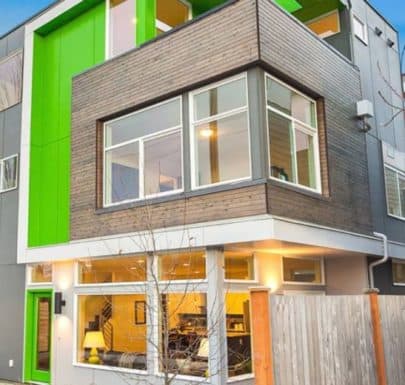Getting started with real estate photography can be challenging for a newbie photographer. The industry can be competitive and there’s a huge pressure in selling properties real fast through amazing photos. However, there are a lot of opportunities with being a real estate photographer. It always pays to be knowledgeable in this industry in order to book clients who are willing and able to pay for your services.
What is real estate photography?
Before you get started, you have to know first what this type of photography is and how it works.
Real estate photography is a kind of photography that deals with architecture, be it residential or commercial. This also covers both interior and exterior shots of the properties. Most often, these photos are used for listings or for marketing purposes.
You also need to understand the difference between different types of architectural photography so that you are able to identify the needed styles and methods to use in order to achieve a certain look.
Components of good real estate photography
There are various parts that all contribute to making an amazing property photo. All these aspects are necessary in order to orchestrate and be able to produce images that the clients actually want. These photos will help in selling properties:
1. The right gear. Having the needed equipment will help you get started with the industry. You need to have at least the basic gears covered. These are a DSLR or a manual digital camera of your choice, a wide angle lens, a remote shutter, and a tripod with a leveler. Other accessories that you might need during a shoot are extra batteries and memory cards.
2. Lighting. Having the best light during a photo shoot will make a difference in how your photos will turn out. Soft and natural light is always best. However, you don’t always get that kind of set up every time. You need to learn how to adjust with the setting and use flash or continuous lighting in order to illuminate the dark areas in your image.
3. Aperture and shutter speed. Just like lighting, you need to have your aperture and shutter speed adjusted depending on the kind of setting that you have. Larger apertures are perfect for focusing on interesting features
4. Proper staging. Real estate photography also needs to be orchestrated in order to achieve the perfect image. Instead of directing, you stage the interiors and make the space look more appealing. You can plump the cushion or arrange the pieces of furniture inside. You can also encourage the clients to stage the property before you come in.
5. Creative angle. When shooting objects or architecture, taking the photo straight on won’t work. Oftentimes, you need to take a different look at the space, especially when the shape or layout is unusual. A 45-degree angle is typically one of the secrets to taking flattering images.
6. Editing. Lastly, post-production of your images allows you to remove unwanted objects and adjust the lighting and color. This ensures that the images are at its best and that you are able the deliver images that sell the property right away.
Basics of photography
Aside from setting up the elements that make up a good real estate image, it still boils down to understanding the best practices and the basics of photography.

Setting the camera correctly. Choose the correct settings every time you have a shoot. To do so, you need to consider the location and the lighting. Set the file numbering and the photo quality accordingly. You may want to set your camera in stills only live view. Set it in manual mode so you are able to control its shutter speed and aperture.
Understand the basics of real estate photography. When doing a shoot, it is essential to prep the property. You might need to turn on all the lights or clean out the spaces from personal belongings. Staging is important in order to set a look that you want.
Know what your clients’ want. It is important to understand the goals of your clients before every shoot. Although you want to follow the set rules of, you need to follow the taste and preferences of your clients. You have to deliver the kind of images that they want. However, you might also want to explain to them what makes a better photo. Another thing is that you also need to ask for their inputs about which parts of the property they want to highlight.
